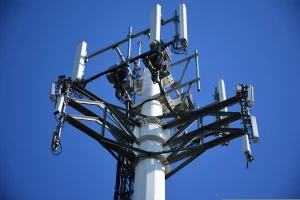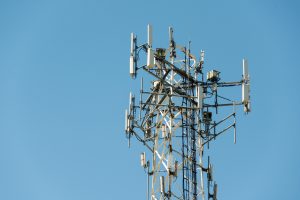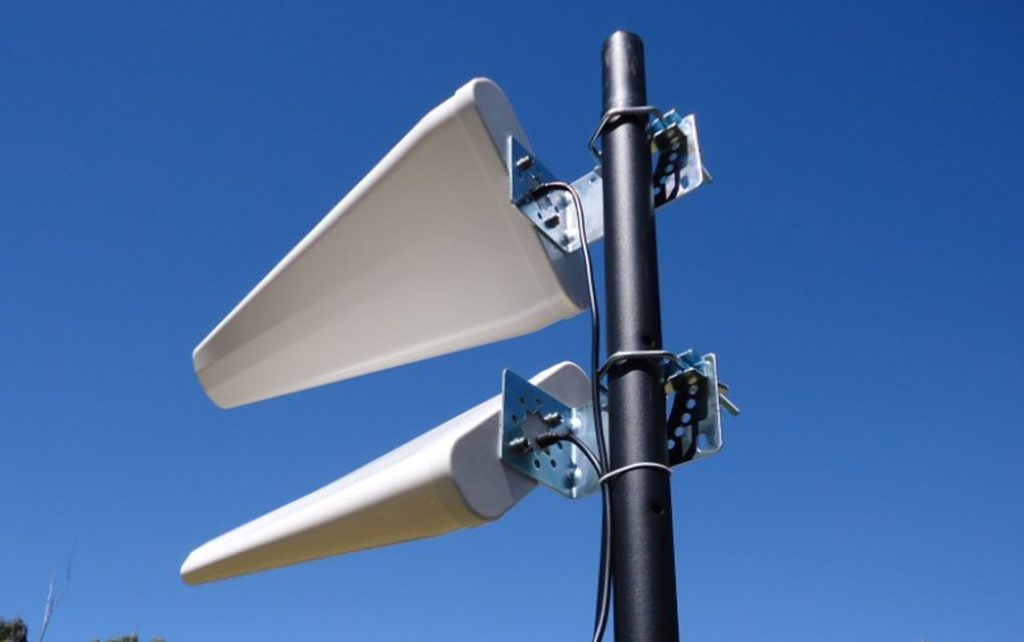Antennas, oh how they perplex us! These little devices play such a crucial role in wireless communication systems that it’s hard to imagine life without them. Transmitting and receiving signals between devices is no easy feat, but antennas make it happen. In fact, they’re an essential component of any wireless network.

But wait – there’s more! If you want to improve the reliability and quality of your wireless links, antenna diversity is the way to go. Yes, you heard that right: using multiple antennas can help mitigate the effects of fading and other signal impairments.
Now hold on tight because this gets even more bursty: there are different types of diversity techniques that can be used with antennas. Spatial diversity uses multiple antennas at different locations for redundancy purposes if one or more experience interference or fading. Antenna diversity takes things up a notch by utilizing various types of antennas (think directional vs omni-directional) so that signals come from multiple paths.
And don’t even get me started on MIMO (Multiple Input Multiple Output)! This technology utilizes multiple antennas at both ends (transmitter and receiver) to enable spatial multiplexing – allowing for higher data rates by transmitting several streams simultaneously over the same frequency band. And guess what? MIMO also provides spatial diversity benefits similar to those provided by good ol’ antenna diversity techniques.
So if you’re looking to reduce signal impairments caused by fading or interference in your wireless communication system, understanding these fancy antenna techniques like spatial multiplexing, antenna diversity, and MIMO is key. Oh yeah – I almost forgot about beamforming techniques which further enhance these capabilities through smart algorithms optimizing radio waves’ directionality towards specific receivers while suppressing unwanted interference from others in crowded environments like stadiums or airports etcetera…mind blown yet?
The Role of Antenna Diversity Techniques in Wireless Communication Systems
Contents
- 1 The Role of Antenna Diversity Techniques in Wireless Communication Systems
- 2 – A discussion of the importance of antenna diversity techniques in improving the reliability and quality of wireless links
- 3 – The different types of diversity techniques and their benefits
- 4 MIMO: Multiple Antennas for Spatial Multiplexing and Diversity
- 5 – An overview of MIMO (Multiple Input Multiple Output) technology and its applications
- 6 – How MIMO enables spatial multiplexing and diversity in wireless communication systems
- 7 – The benefits and challenges of using MIMO
The intricacies of wireless communication systems can be perplexing, but antenna diversity techniques offer a solution to improve reliability and quality. Through spatial diversity, multiple antennas receive varying versions of the same signal, mitigating potential signal fading caused by multipath propagation.

Various types of diversity techniques exist for wireless communication systems such as transmit and antenna diversity schemes. While transmit diversity involves sending duplicate signals from distinct antennas to enhance reception at the receiver end, antenna diversity schemes utilize numerous antennas to pick up signals from one transmitter.
MIMO technology is a popular example that employs both spatial and antenna diversity. By incorporating multiple antennas on both transmitting and receiving ends, MIMO enables spatial multiplexing which increases data rates while also providing resilience against fading channels. Yet this advancement does not come without its challenges; increased complexity in hardware design and channel estimation algorithms must be addressed before successful deployment within wireless communication systems can occur.
– A discussion of the importance of antenna diversity techniques in improving the reliability and quality of wireless links
The intricacy of wireless links demands a paramount approach to enhance their reliability and quality. Antenna diversity techniques are deemed indispensable in this regard. The enigma lies in the fact that signals, amidst fading channels, often encounter interference or multipath effects which lead to deep fades resulting in substandard transmission quality. However, utilizing multiple antennas at both ends of the transmission helps mitigate such predicaments.
A single antenna can be susceptible to fading caused by changes in propagation conditions; however, with several receive antennas, diverse streams of information from each antenna can be amalgamated to upgrade signal quality while reducing errors. Moreover, deploying multiple transmit antennas enables simultaneous data stream transmissions that augment throughput and provide redundancy for improved reliability.
Antenna diversity techniques have become increasingly crucial as wireless communication systems grow more complex. With escalating data rates and surging demand for reliable connectivity across various devices and networks alike; it is imperative to employ strategies that ensure efficient transmission even under challenging circumstances such as interference or deep fades. These techniques proffer an effective means of achieving this goal whilst enabling spatial multiplexing which further enhances performance through better spectral efficiency- thus bursting forward with unparalleled brilliance!
– The different types of diversity techniques and their benefits
Antenna diversity, a technique that employs multiple copies of an antenna system to enhance the reliability of wireless links, is a perplexing and bursty concept. The convolution of attenuation and fading caused by multipath propagation can be mitigated by employing additional antennas at either end of the communication link, allowing for spatial diversity and spatial multiplexing.
Spatial diversity pertains to the use of multiple antennas that receive signals along different paths. By exploiting the uncorrelated fading between these paths, errors in data transmission due to destructive interference are reduced. On the other hand, spatial multiplexing involves transmitting numerous data streams simultaneously over separate antennas through distinct wavelengths.
The benefits associated with using antenna diversity techniques such as improved signal quality, increased throughput, and reduced error rates are strikingly fascinating; however, executing such schemes can be challenging owing to hardware complexity and cost issues. Additionally, selecting appropriate modulation schemes that take full advantage of these techniques while minimizing interference between channels requires careful consideration.
MIMO: Multiple Antennas for Spatial Multiplexing and Diversity
MIMO technology is a true game-changer that has revolutionized wireless communication systems. Its multiple antennas enable an array of techniques, including spatial multiplexing and diversity, which can significantly enhance the quality of wireless links.
Diversity in wireless communication systems can be achieved by utilizing MIMO’s ability to receive different spatial streams of data through multiple antennas. The data streams are then combined using equal gain combining, allowing the system to switch between antennas if one experiences signal degradation or fading without interrupting transmission – truly perplexing!
With its capability to increase bandwidth and coding efficiency, MIMO enables more simultaneous transmissions on a single channel than would be possible with a single antenna system – bursting with potential! This results in faster speeds and greater throughput for users.
Of course, implementing a MIMO diversity scheme requires additional hardware compared to a single antenna system. However, due to its superior integration versus a single antenna it provides better reliability and speed performance- absolutely mind-boggling!
Despite challenges such as interference between signals from different antennas or synchronization issues between transmitters and receivers,MIMO remains an indispensable tool for improving the quality and reliability of wireless communication systems today- truly awe-inspiring!
– An overview of MIMO (Multiple Input Multiple Output) technology and its applications
MIMO technology, a true enigma in wireless communication systems, has revolutionized the way we transmit data. Multiple Input Multiple Output technology uses two or more antennas to perplexingly improve signal quality and reliability. The transmitter and receiver sport multiple antennas that create independent channels for transmitting and receiving data, resulting in an unprecedented burstiness of information throughput.
The cherry on top is MIMO’s ability to enable spatial multiplexing- a mind-boggling feature that ensures multiple streams of data are transmitted simultaneously over different paths between the transmitter and receiver using independent channels. This not only increases information transmission but also spurs overall system performance into overdrive!
While implementing MIMO may prove challenging due to additional hardware requirements compared with traditional single-antenna systems, advantages such as commonality in signal paths have nonetheless emerged. Therein lies its beauty – a fair amount of circuitry can be shared among antennas! As such, despite challenges associated with integrating MIMO tech into existing wireless communication systems, it has become increasingly popular due to its dazzling potential benefits for improving overall system performance.
– How MIMO enables spatial multiplexing and diversity in wireless communication systems
MIMO technology has been an absolute game-changer for wireless communication systems, boasting impressive capabilities in spatial multiplexing and diversity. What’s even more fascinating is how it achieves these feats through the clever use of antenna configurations.
With multiple transmitter and receiver antennas working simultaneously, MIMO can transmit signals from different directions all at once! The result? An incredible increase in information throughput that makes your head spin!
But wait – there’s more! MIMO also brings some serious reliability benefits to the table by reducing co-channel interference and fading effects on signals. With so many smart receiver antennas picking up every little signal detail, there’s less chance of interference or obstacles causing any pesky interferences.
It’s simply astounding how much power MIMO holds within its grasp – a true technological marvel indeed!
– The benefits and challenges of using MIMO
The staggering technological advancements of MIMO technology offer a plethora of benefits for wireless communication systems. With the use of multiple antennas, spatial diversity is harnessed to enhance the quality of received signals and accelerate data rates. Furthermore, spatial multiplexing allows for various signals to be transmitted simultaneously over a single channel – an undeniable feat.
Nevertheless, using MIMO presents its own set of challenges. For instance, time delays between different antennas can wreak havoc on performance by causing interference that impedes progress. Combatting this issue requires innovative techniques such as Alamouti coding to mitigate the effects of these pesky delays.
Another challenge with implementing MIMO is that it demands greater processing power in comparison to traditional single-antenna systems. The amplified requirement means complex algorithms must be integrated into the system in order to utilize all available antenna resources effectively.
Despite these obstructions, simulations have shown that utilizing MIMO technology can lead to substantial improvements in signal quality and data rate performance when compared against single-antenna systems. As a result, many wireless communication systems are now embracing MIMO technology within their designs so as not to miss out on its unparalleled benefits.


